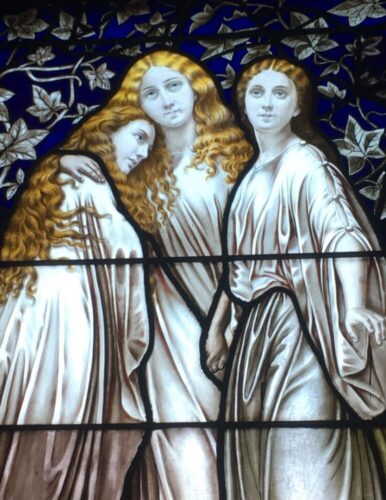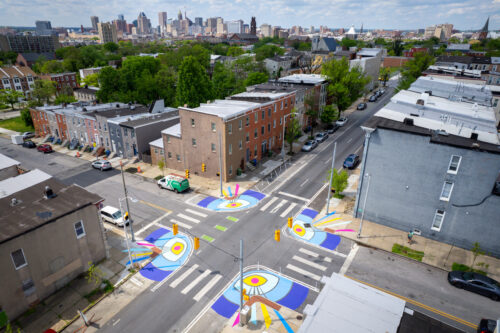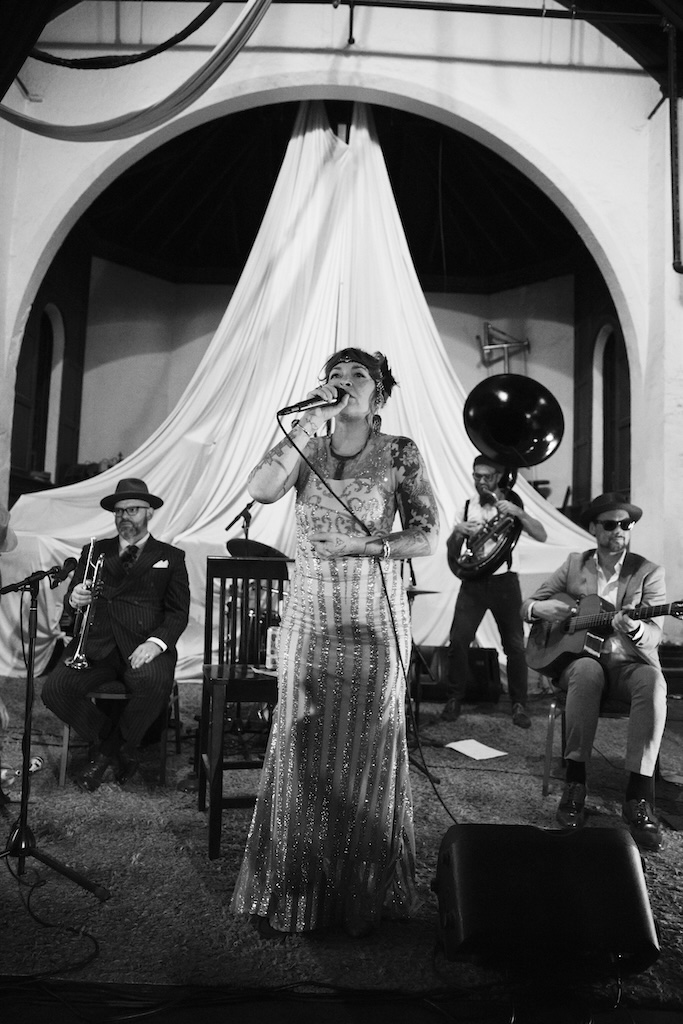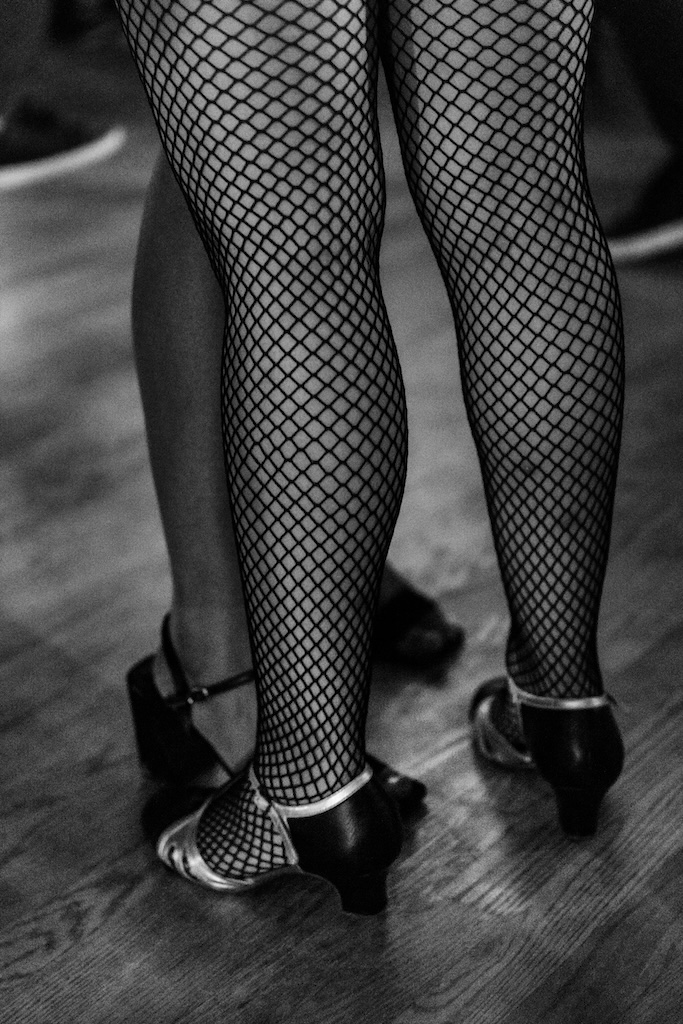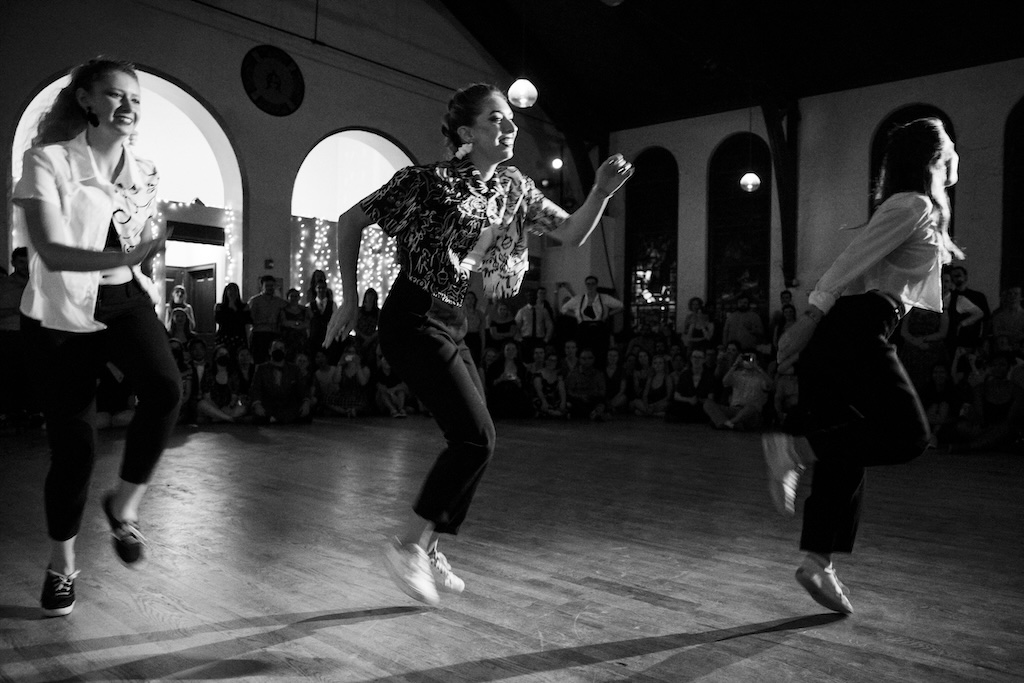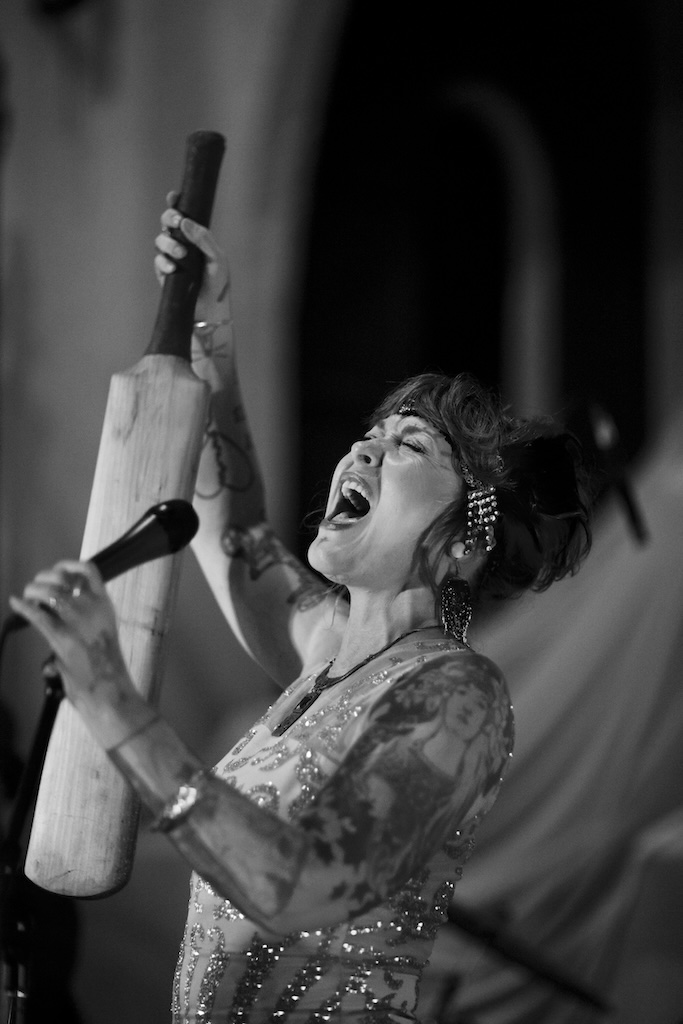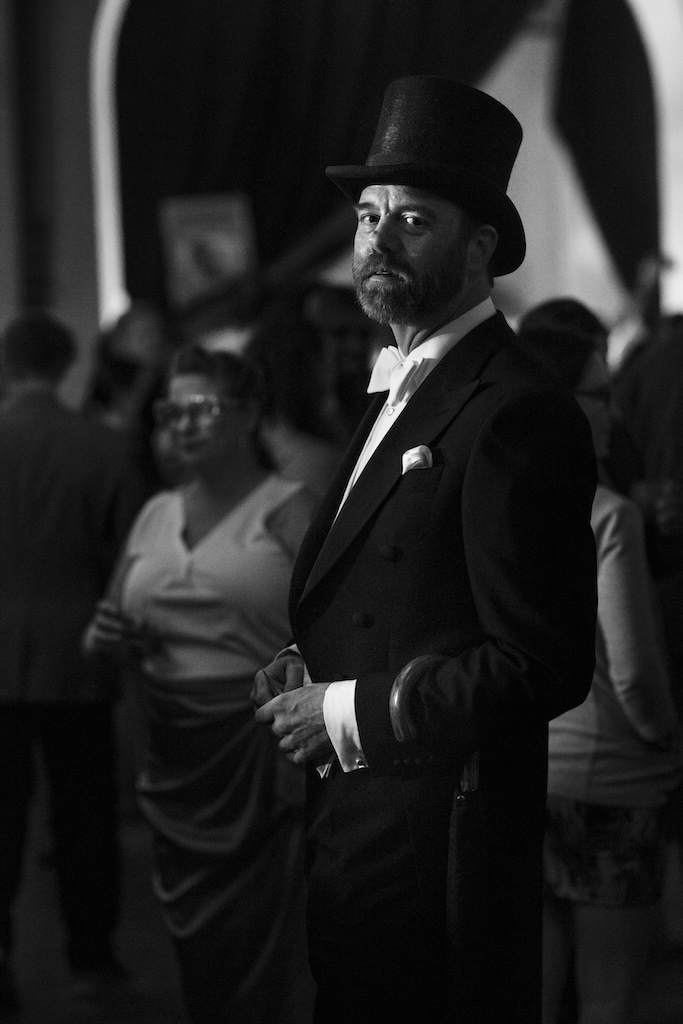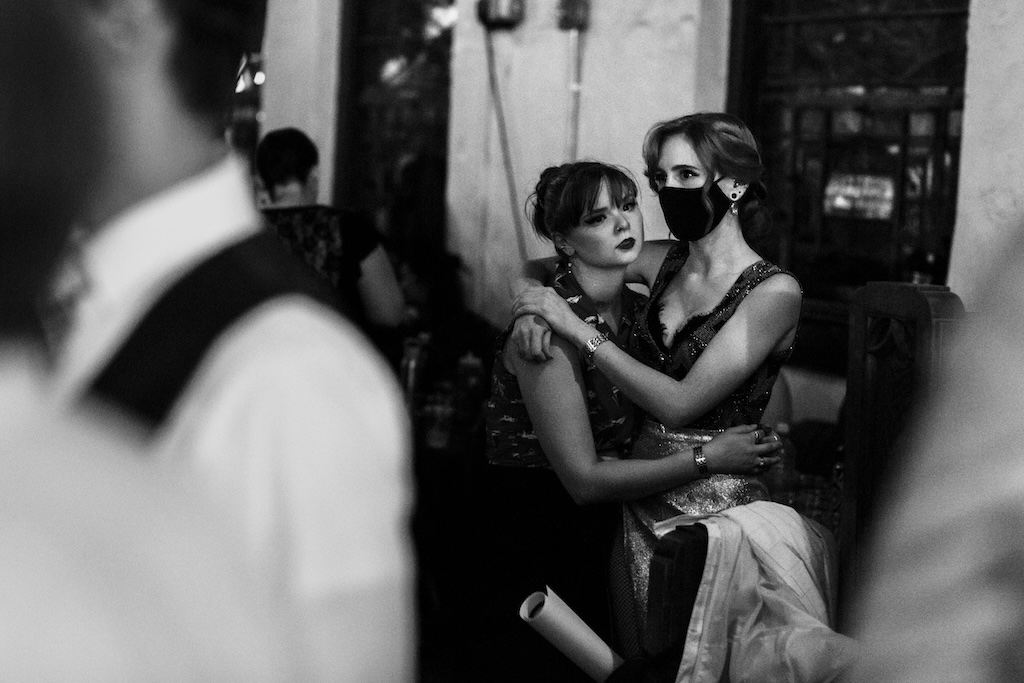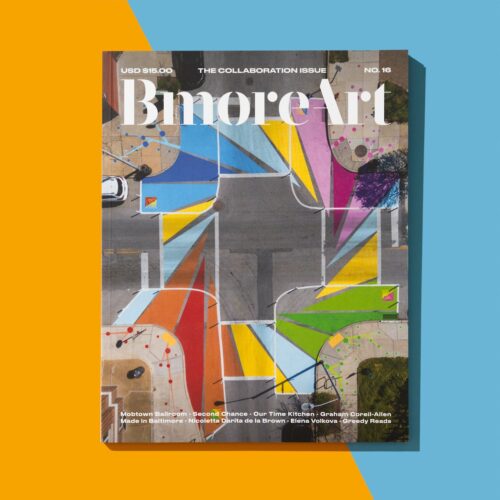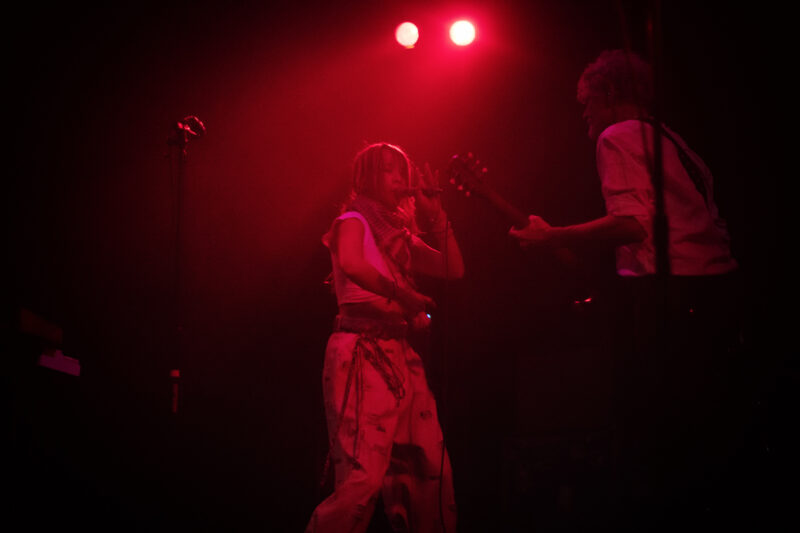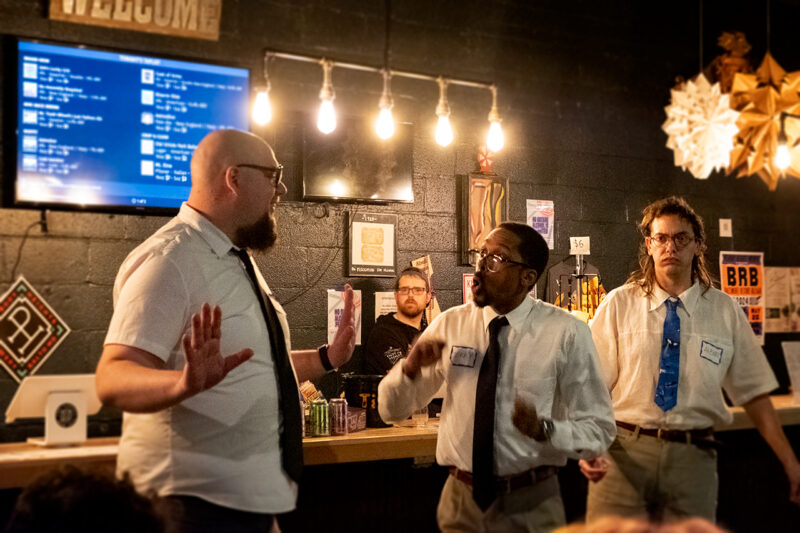In the middle of Washington Boulevard in Baltimore’s Pigtown neighborhood, there stands a beautiful 19th century stone church. Look through its stained-glass windows on a Sunday morning and you won’t be met by a congregation; you’ll see no pews, hear no organs. But on a Monday or Friday night, it’s near impossible to miss the sounds of buzzing brass instruments or the vibrations made by dancers’ feet moving in time on a bouncy sprung floor designed as a shock absorber.
For the last twelve years, the Mobtown Ballroom has drawn in regulars from the city to swing dance under the dome of its high ceilings, including the two authors of this article. At the time, one of us was a college student looking to break away from campus; the other was finding her place after moving to Baltimore from another country. We found Mobtown through its social dances. It was not only an outlet for creativity, but for meeting like-minded people (and each other).
Mobtown makes it clear to newcomers and regulars alike: this is a welcoming place where dancing is a conversation with your partner and the people around you. There is a give and take that makes the ballroom a safe, fun place to learn. After speaking to owners Sarah Sullivan and Michael Seguin, we found that their venue etiquette and business ethics are not so different.
